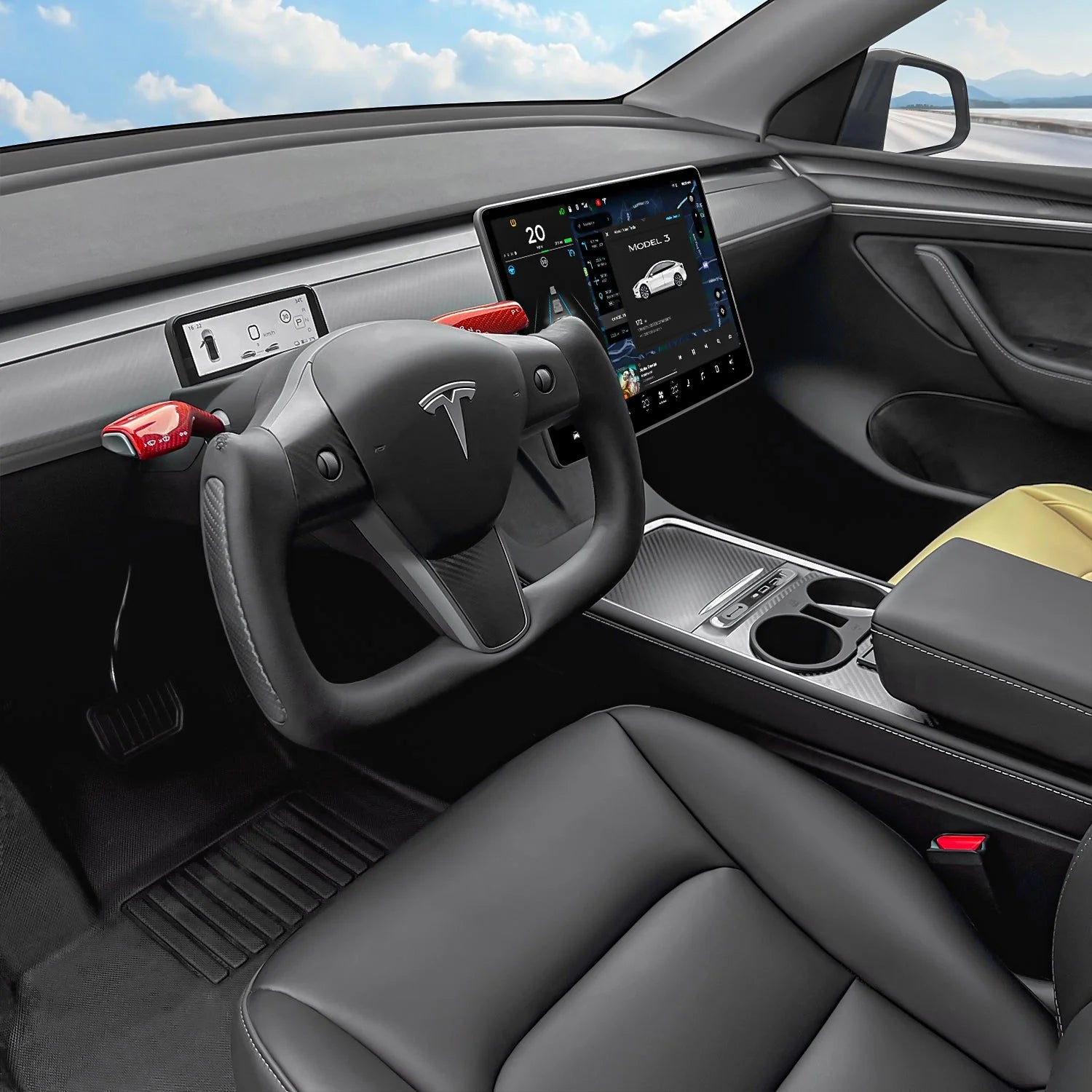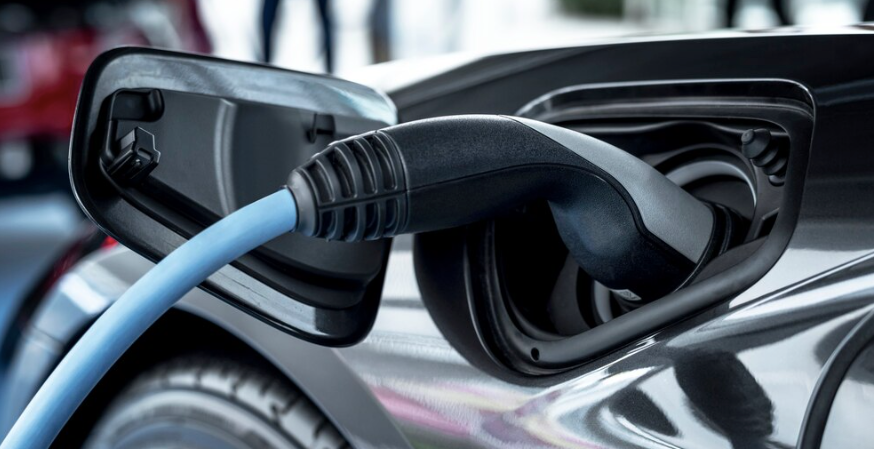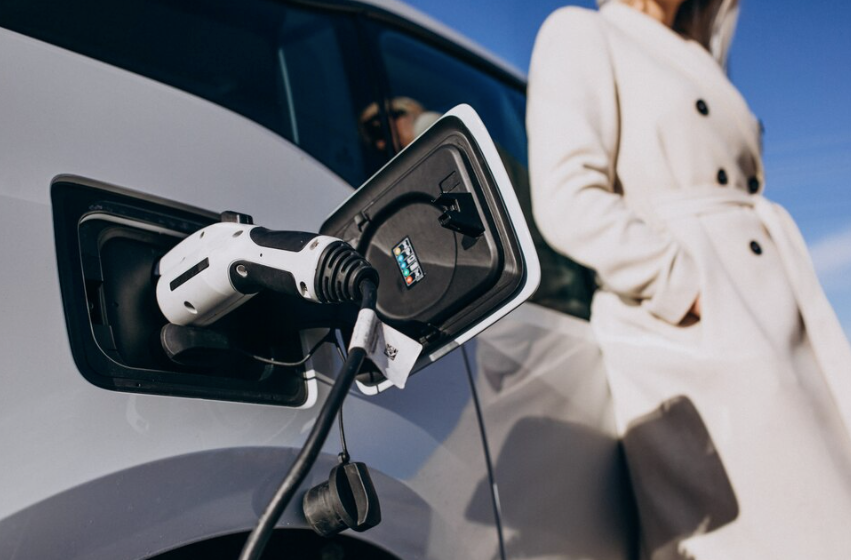Updated on: 14.02.2025
Are you a fan of electric cars native to the US and planning a trip to Europe? This is indeed an intriguing thought yet there is a challenge in the electric car industry that you might come across: to charge your US electric car in EU. However, the problem is that European countries have their own unique standard for electric vehicle charging hence creating a state of confusion for travelers.
But don't worry! In this article, we'll break it down for you. We will share seven important EV charging standards in the EU electric car industry, and now it will be easy for you to understand.
You will confidently recharge your electric car and enjoy your European adventure without any problem.
What are the basics when it comes to charging electric vehicles?
Different plug types and various charging levels need to be taken into consideration for charging electric vehicles. Level 1 employs a standard household outlet, which is typically comparatively slow but may be handy for overnight charging.
Level 2 chargers operate using a 240V AC outlet and provide much quicker charging so that they may be appropriate for nearly all home installations and some public stations.
Level 3 is also DC fast charging and provides the quickest charge through its high-powered chargers, found at public stations, which can take most EVs to an 80% charge in about 30 minutes.
EVs are typically fitted with CCS or CHAdeMO connectors for DC fast charging; however, compatibility differs by region and vehicle model.
The EV Car Industry
Before going straight to the charging standards in the EU, it's better first to understand the whole EV car industry.
The electric car industry has brought tremendous change in the face of transportation with low emissions, reducing our carbon footprint and eventually an increase in a more friendly environment.
Moreover, recently electric cars have made a huge leap forward within the United States and today many manufacturers cater to different tastes and varying budgets to produce the full gamut of EV models.
From compact electric vehicles perfect for a city commute to luxurious electric SUVs perfect for taking your family on the road, there's an electric vehicle for just about every occasion.
But what occurs if you are one of those electric car enthusiasts who wants to bring their US electric vehicle across the Atlantic to tour scenic Europe? Here is the twist. The electric car industry has seen tremendous advancement, but charging infrastructure standards among US states and European nations may greatly differ, causing confusion and potential roadblocks to travelers across the international divide.
Let's see how.
EV Charging in the US and Europe
Now let's consider the differences in EV charging in the United States and Europe which can become essential for a would-be traveler across Europe with a US electric car.
Charging infrastructure in the country has grown by leaps and bounds over the years. Normally, three levels of charging stations exist:
- Level 1 Type 1 connector (EV home chargers): Degradingly referred to as the slowest charging speeds, EV home chargers could make use of a standard 120-volt household outlet. Ideal for overnight charging at the convenience of your home, this can be viewed as direct-plugging the vehicle into a standard wall socket.
- Level 2 Type 1 connector: Level 2 charging is faster, and used mostly in public facilities like parking lots, workplaces, and some residential places. It uses 240 volts similar to your dryer or oven in the house. This level of charging appears fast because it tops up the charging capability faster.
- DC Fast Charging CCS1 or NACS (Level 3): DC fast charging is the fastest option across the US. It's a charger that is commonly put beside highways and main routes, so it will be ideal for long travels. These are chargers that offer a good charge over a short time. Currently there are two main fast charging standards in the US- CCS1 and NACS (the standard that Tesla imposed and will become more popular in the incoming years).
However, when you land your US electric car in Europe, the difference in charging standards is significant. Most European countries use two main types of charging connectors:
- Type 2 connectors (Mennekes): Type 2 connectors are another type of connector that is widely used in Europe for AC charging. It is basically a Level 2 cable and it can be installed at homes, businesses as well as public charging stations. The main difference is that it supports 3-phase charging.
- Combo 2 (CCS): Combo 2 connectors are very similar to the Japanese type but applied in DC fast charging units covering Europe. They usually use high-speed chargers (150 kW and above) which will be needed to apply during long travels across the countries outside.
The fact is that the US-European charging systems difference basically involve more than just the connectors but also goes all the way to the voltage and current. This is really what can make US electric car compatibility tricky in Europe entirely.
Electric vehicle charging in Europe`s most popular tourist destinations:
Electric vehicle charging in Europe has expanded a lot, making it easy for EV owners to travel around. There are over 700,000 public charge points available across the continent.
Shell Recharge, for example, offers a big network of charge points in 33 countries. These stations are at places like shopping centers, restaurants, hotels, and tourist spots, so drivers can charge conveniently.
Apps like Shell Recharge help find these points easily. Planning an EV road trip in Europe is simpler now with tools that map out routes and suggest stops for sightseeing or breaks.
As more fast chargers and places to charge pop up, eco-friendly travel in Europe is becoming more practical and enjoyable.
What is Smart EV charging?
Smart charging for EVs incorporates advanced technology to make the electric vehicles charge in a way that maximizes efficiency and assures no harm to the power grid. It includes optimization of charging times when energy is cheaper or available, control through smartphone apps, and use of renewable energy for charging the vehicle.
Moreover, it involves carrying out load balancing to mitigate grid overloading and it enables vehicle-to-grid exchanges which can translate into revenue for the power user.
Making smart charging, easy, and charger reservation systems features, enhances the user experience while providing valuable data for optimizing energy consumption patterns, playing a pivotal role in the transportation's sustainable-infrastructure evolution.
Now let's talk about the 7 EV charging standards in Europe that the electric car industry has created.
7 EV Charging Standards in Europe
A number of charging standards have been devised in Europe to guarantee the compatibility, safety, and efficiency of Electric Vehicle (EV) charging.
These standards dictate various elements required in the EV charging system; ranging from the physical connectors used to communication protocols and safety regulations.
Here are seven major EV charging standards in Europe:
· Type 2 Connectors for AC Charging
Type 2 connectors are most widespread across Europe since they have become the AC charging unit standard, mainly due to their versatility and compatibility with a wide selection of EVs. These can be used in both single-phase and three-phase designs and therefore provide an attractive compromise between demand and flexibility for effective charging speeds.
· Combined Charging System (CCS2)
Combined Charging System (CCS2) is a single connector hosting DC charging capabilities. It has been widely adopted due to the versatility it provides through the rapid DC charging as necessary for quick top-ups on longer journeys. This is the so-called “fast charging” and such chargers in Europe reach up to 350 kW.
· CHAdeMO: The Fast Charging DC Standard
Another DC charging standard, CHAdeMO was initially developed in Japan, although Europe has also embraced it. Designed with a particular focus on faster charges that could extend a vehicle's range to facilitate longer trips, it features considerable power transfer and very robust safety. CHAdeMO chargers are becoming rarer as there are few vehicles which can use them. Only older Japanese electric cars still use the CHAdeMO such as the Nissan Leaf, Nissan env200, Mitsubishi iMiev, Kia e-Soul. CCS2 charging stations are much more popular in Europe thus a CCS2 to CHAdeMO adapter has been developed.
· IEC 62196: Plugs and Sockets
The plug outlines within the IEC 62196 standard relating to plugs, socket-outlets, and vehicle connectors describe the general requirements that exist pertaining to the constituent parts of what act as connectors.
It is a broader description across different forms of connector use such as the Type 1 and Type 2 and the CCS2 system while embracing safety and interoperability between various models of EVs and charging installation infrastructure under consideration.
· Standard for Safety EN 61851-1
The EN 61851-1 standard states the general requirements of electric vehicle conductive charging systems members ensuring safety in electrical, mechanical, and thermal aspects. It defines the general common requirements of the whole unit i.e., charger, cable, and vehicle connection.
· ISO 15118 Standard for Automatic Billing and Power Connectivity
ISO 15118 standardizes the communication protocol between the electric vehicle as well as the charging station. It supports plug-and-charge features where auto authentication plus billing takes place and demand response capabilities where there exists communication too among the vehicle as well as the grid hence optimizing charging that depends on the real-time grid demand as well as pricing.
· Protocol for Mode 3 Charging
The protocol on how to safely plug an EV charger into the AC power receptacle in a safe and managed way has been defined in Europe with conventional reference as Mode 3 charging. It's typically used for home and public charging offering a higher level of safety through an electromechanical interlock between the vehicle inlet and connector. This ensures power is only supplied once the connector is correctly attached, and communication established.
The public charging stations usually followed the mode 3 charging protocol along with e-invoicing after charging an EV.
E-Invoicing Post Charging of an EV
E-invoicing post EV charging by a vendor is also inclusive of effective billing so that the process may be continued paperless seamlessly. At the end of a charging session, data related to energy usage and cost are processed to an e-invoice and sent directly to the user's email or app.
This effective method ensures easy payments, and transparent record keeping, aligned to the eco-friendly ethos of EVs, lending an experience to users that is efficient and sustainable in the digitalized mobility ecosystem.
Are there specific apps or tools that can help locate a compatible standard EV charger for US EVs in Europe?
Traveling in a U.S.-spec electric vehicle throughout Europe is especially difficult due to the diversity of charging standards and connector types.
To ensure a seamless experience, it is essential to utilize authentic tools that help identify appropriate charging stations.
Here are some of the top apps and tools to assist you:
- PlugShare: A global EV charging map that helps locate compatible stations, filter by connector type, and read reviews from users for current charging details. Available via web and mobile app.
- Chargemap: A European application providing real-time charging station availability, route planning, and detailed station information to ensure compatibility with your US EV. Supports multiple connector types.
- A Better Routeplanner (ABRP): EV road trips are planned with appropriate charging stops based on vehicle type, battery levels, traffic, and weather.
- evway: A European EV charging network app covering 500,000+ stations, offering real-time availability, navigation assistance, and a user-friendly interface for hassle-free charging sessions.
- Tesla Supercharger & Open Superchargers: Tesla’s network in Europe supports non-European Tesla models with adapters, offering high-speed charging and an integrated navigation system for finding nearby Superchargers.
What challenges might you face when using US electric vehicles with European charging stations?
Using a U.S. electric vehicle (EV) in Europe presents several challenges due to differences in car charging standards, infrastructure, and power systems.
Here are the key obstacles you might face:
1. Connector Incompatibility
U.S. EVs use different charging plugs than European stations. You will need an adapter to connect your car to most European chargers.
2. Charging Speed Limitations
Even with an adapter, your car may charge slower or not work at all at some stations. Carefully check the rated amperage of the adapter you purchase. Tesla vehicles can accept 500A +.
3. Voltage & Power Differences
Europe uses higher voltage than the U.S. Home charging may be slower or need a special converter to work properly.
4. Limited Tesla Supercharger Access
Some Tesla Superchargers in Europe work with U.S. Teslas, but not all. You may need a CCS2 adapter, and older models may not be supported.
5. Payment & Authentication Issues
Many European chargers need RFID cards or local apps to start charging. Some payment systems from the U.S. may not work in Europe.
6. Availability of Compatible Adapters
You will need CCS1 to CCS2 or Type 1 to Type 2 adapter. These can be hard to find in Europe, and some fast chargers don’t allow adapters.
7. Navigation & Charging Network Differences
Your car’s navigation system may not show European chargers. Use apps like PlugShare or ABRP to find charging stations.
Conclusion
So that would be how to charge a US electric car in the EU. With these 7 EV charging standards in your mind, you will be well prepared to deal with the many wieldy forms of charging infrastructure to ensure compatibility and safe and efficient delivery.




